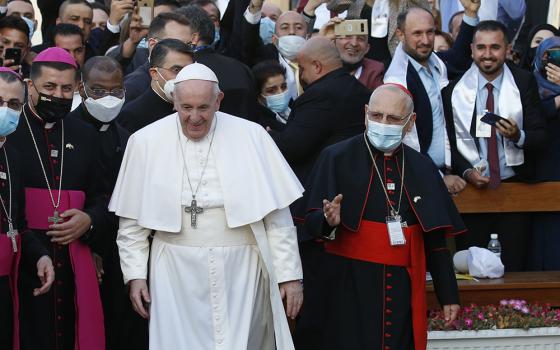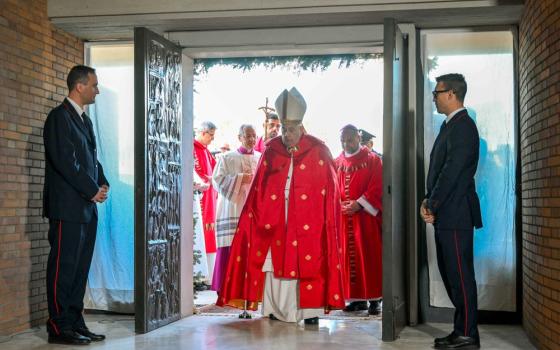Yesterday, I began my review of Todd Scribner’s new book A Partisan Church: American Catholicism & the Rise of Neo-Conservative Catholics. As noted, he focuses on three neo-con Catholic intellectuals in particular, Michael Novak, Richard John Neuhaus, and George Weigel.
It is one of the strengths of Scribner’s analysis that he often, and to good effect, explains not only how the three main characters in the story relate to one another, but also other intellectual trends affected all three. I noted yesterday that Scribner does a fine job summarizing the debate in post-World War II intellectual circles about the advisability of a “public philosophy” with Sidney Hook and Arthur Schlesinger opposed and Walter Lippmann believing such a shared public philosophy was essential.
Similarly, at the start of the second chapter, Scribner summarizes Alasdair MacIntrye’s After Virtue, published in 1984, and details how that work would affect all three of the Catholic neo-cons he surveys: “In the contemporary Western world all that is left are disconnected key expressions and bits and pieces of conceptual schemes, but no comprehensive paradigm that can be appealed to as a way to judge the legitimacy of moral claims….Lacking an objective framework to weigh moral claims, MacIntyre argues that we are left with emotivism, ‘the doctrine that all evaluative judgments and more specifically all moral judgments are nothing but expressions of preference, expressions of attitude or feeling, insofar as they are emotive or evaluative in character.’” MacIntyre would go on to emphasize the importance of narrative in grounding a shared moral framework, a nod to the importance of stories and myths (understood not in a pejorative way) in creating an intellectual climate that discloses truth and defends it and identifies deviance and proscribes it.
Scribner goes on to show how Novak, Neuhaus and Weigel created such narratives in their own writings. “Neuhaus emphasized the important role that Christianity played in the development of an American-style liberal democracy,” Scribner writes, and he provides ample documentation to support this conclusion. It is undoubtedly the case that too many historians, for too long, undervalued the role of Christianity in forming American culture. Neuhaus was on to something even though his own examination of that role is incomplete. Having concluded his summation of Neuhaus on this point, we see a fine example of Scribner’s analytical skill. He introduces Notre Dame historian Mark Noll’s work on the way republican and Christian ideals were forged during the period around the time of the American Revolution and early Federal era, and then writes:
The fusion between republican and Christian worldviews makes Neuhaus’s argument more complex and highlights some potential weaknesses in his analysis….throughout his writings his emphasis tended to focus on the foundational role that Christianity had in the emergence of culture and the American political worldview. Reading Neuhaus one is often left with the sense that while other elements may have contributed to the formation of the American political system, Christianity was the necessary condition in the process. But scholars such as Noll have pointed out that there was for some time a certain separation, if not a chasm, between the two traditions under discussion. Throughout his writings during this period, Neuhaus did not make much of an effort to analyze the roots of liberalism independent of the Christian worldview that he argued underlay it.
Further, he does not directly wrestle with the significant ways in which “secular” culture helped to shape Protestantism in the eighteenth and early nineteenth centuries.
These sentences show the deft, incisive critique Scribner levels, it is never harsh, but it is telling.
When Neuhaus complains about the mainline churches for forfeiting their culture forming role, too willing to ape the ambient political culture, he does not focus on the rise of consumerism, the flight to the suburbs or the breakdown in extended families. It is all about ideology. For someone who founded a journal that aimed to assert “first things” over against mere politics, the first things that interested Neuhaus are all cerebral. Demographic and other cultural changes, especially the replacement of the ideal of the good life with the ideal of the goods life in post-war America, never make it to the ranks of first things warranting attention. And, given Neuhaus’s trajectory in the period after that under discussion in Scribner’s book, the charge of “accomodationism” leveled against the mainline churches rings a bit hypocritical coming from someone who bent over backwards to justify upper-case R Republican foreign and economic policies. Physician, heal thyself.
Scribner’s treatment of Weigel’s narrative is similarly sensitive, accurate and, in the end, devastating. He notes that Weigel drew almost completely on the legacy of John Courtney Murray, specifically the idea that the heavy spadework in the world of ideas that would shape the American founding actually have their “taproots” in the warm earth of medieval Catholicism. This would have been news to the country whig propagandists who were most frequently cited by the pampleteers of American Revolutionary era! But, Weigel’s narrative complained that elite Catholic intellectuals abandoned Murray after the Council and “set themselves the task of delegitimizing the American proposition – although what many of them understood themselves to be doing was undertaking a ‘prophetic’ critique of the American system of political economy and of U.S. foreign policy.” I will grant that many post-Vatican II theologians got off track, and that “prophetic” visions were a dime a dozen and often just as accomodationist as they were prophetic. But, surely, the disaster in Vietnam, the murder of American leaders, and Watergate did the lion’s share of the work in “delegitimizing” the American system of political economy, at least compared to the papers being delivered at a CTSA meeting.
Weigel argued that natural law could come to rescue, providing Americans with a non-sectarian, shared language of moral discourse. Again, we see Scribner deploy his analytical scalpel to great effect. He writes: “While appealing to the natural-law tradition as a solution to this chaotic state of affairs, the case that he [Weigel] makes during this period falls short of its intended target. His failure to provide a theoretical defense of natural law, something he readily admitted he was not trying to do, is the very case that he needed to make so as to provide a convincing brief for his argument.” Scribner adds that MacIntyre understood what Weigel could not grasp, “that the Thomistically grounded moral thought of natural law, on which Weigel depended is itself a tradition that in a modern context is in competition with competing moral traditions.” Scribner is, perhaps, too kind to note that in all his years of writing, Weigel did not substantially add anything to Murray’s thought, he merely regurgitated it. We might also observe that Weigel did not feel the need to articulate the value of natural law thinking to a modern public because he did not actually intend to use it for such a purpose. He used – and uses – the natural law to beat his opponents over the head.
Novak fares the best of the neo-con troika in this chapter. He did not share Neuhaus’s belief in the essential importance of Christianity in the American founding, still less Weigel’s belief that the founding was rooted in medieval Catholic thought. Instead, Novak argued that the Catholic intellectual tradition “converged” with the modern liberal tradition in the twentieth century, specifically in the articulation of “development” and “human rights” in Catholic Social Thought. Novak believed that Pope Paul VI’s “commitments to human rights and to economic development commit him to liberal institutions” even if the pope did not realize it. Novak worried, however, that a certain Romanticism, and even Gnosticism, manifested themselves in the post-conciliar era, with many in the Church, especially liberation theologians, panting after an ideal that was unrealizable and which, in any historical attempts to realize this-worldly salvation, came to grief for those who were supposed to be liberated by such attempts to attain an idealized future.
Early in this chapter on "The Narrated Life" Scribner observes that "During the eighties each of the neoconservative Catholics developed an increasingly politically conservative narrative that was paired with a distinctive understanding of the Catholic moral and theological tradition." Indeed. Surely, it is mere coincidence that the "increasingly politically conservative" narratives came during the heyday of Reaganism. And, surely, the "distinctive understanding" of the faith emerged from serious intellectual wrestling, and was not merely a way to embrace Reagan, and go off in search of the appropriate baptismal waters for the modern GOP. Surely this was no mere accomodationism. Surely.
Tomorrow, I shall conclude my examination of this important book.




